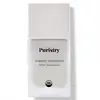What's inside
What's inside
 Key Ingredients
Key Ingredients

 Benefits
Benefits

 Concerns
Concerns

 Ingredients Side-by-side
Ingredients Side-by-side

Ilex Paraguariensis Leaf Oil
PerfumingGlycerin
HumectantEuterpe Oleracea Sterols
Skin ConditioningXanthan Gum
EmulsifyingCamellia Oleifera Leaf Extract
AstringentSqualane
EmollientLonicera Japonica Flower Extract
Skin ConditioningGlyceryl Stearate
EmollientCetearyl Alcohol
EmollientSodium Stearoyl Lactylate
EmulsifyingAspalathus Linearis Leaf
Skin ConditioningLycium Barbarum Fruit Extract
AstringentEpigallocatechin Gallate
AntioxidantCamellia Sinensis Catechins
AntioxidantHyaluronic Acid
HumectantCitrus Aurantium Bergamia Fruit Oil
MaskingCedrus Atlantica Bark Oil
MaskingVetiveria Zizanoides Root Oil
MaskingCitrus Sinensis Peel Oil Expressed
PerfumingSalvia Officinalis Oil
MaskingLavandula Angustifolia Oil
MaskingIlex Paraguariensis Leaf Oil, Glycerin, Euterpe Oleracea Sterols, Xanthan Gum, Camellia Oleifera Leaf Extract, Squalane, Lonicera Japonica Flower Extract, Glyceryl Stearate, Cetearyl Alcohol, Sodium Stearoyl Lactylate, Aspalathus Linearis Leaf, Lycium Barbarum Fruit Extract, Epigallocatechin Gallate, Camellia Sinensis Catechins, Hyaluronic Acid, Citrus Aurantium Bergamia Fruit Oil, Cedrus Atlantica Bark Oil, Vetiveria Zizanoides Root Oil, Citrus Sinensis Peel Oil Expressed, Salvia Officinalis Oil, Lavandula Angustifolia Oil
Aloe Barbadensis Leaf Juice
Skin ConditioningHelianthus Annuus Seed Oil
EmollientRosa Damascena Flower Water
MaskingGlycerin
HumectantCalanthe Discolor Extract
Skin ConditioningRhododendron Ferrugineum Leaf Cell Culture Extract
Skin ConditioningVaccinium Vitis-Idaea Fruit Extract
AntioxidantChenopodium Quinoa Seed Extract
Skin ConditioningCitrus Aurantium Dulcis Callus Culture Extract
Skin ConditioningSodium Hyaluronate
HumectantBakuchiol
AntimicrobialHippophae Rhamnoides Fruit Oil
Skin ProtectingTocopherol
AntioxidantNiacinamide
SmoothingCalendula Officinalis Flower
Skin ConditioningOlea Europaea Fruit Extract
BleachingSqualene
EmollientXanthan Gum
EmulsifyingRaspberry Ketone
MaskingPelargonium Graveolens Leaf Oil
Rosa Damascena Flower Oil
MaskingLavandula Angustifolia Flower Oil
MaskingCitrus Aurantium Bergamia Fruit Oil
MaskingWater
Skin ConditioningLauryl Glucoside
CleansingMyristyl Glucoside
CleansingPolyglyceryl-6 Laurate
EmulsifyingCaprylhydroxamic Acid
Glyceryl Caprylate
EmollientAloe Barbadensis Leaf Juice, Helianthus Annuus Seed Oil, Rosa Damascena Flower Water, Glycerin, Calanthe Discolor Extract, Rhododendron Ferrugineum Leaf Cell Culture Extract, Vaccinium Vitis-Idaea Fruit Extract, Chenopodium Quinoa Seed Extract, Citrus Aurantium Dulcis Callus Culture Extract, Sodium Hyaluronate, Bakuchiol, Hippophae Rhamnoides Fruit Oil, Tocopherol, Niacinamide, Calendula Officinalis Flower, Olea Europaea Fruit Extract, Squalene, Xanthan Gum, Raspberry Ketone, Pelargonium Graveolens Leaf Oil, Rosa Damascena Flower Oil, Lavandula Angustifolia Flower Oil, Citrus Aurantium Bergamia Fruit Oil, Water, Lauryl Glucoside, Myristyl Glucoside, Polyglyceryl-6 Laurate, Caprylhydroxamic Acid, Glyceryl Caprylate
Ingredients Explained
These ingredients are found in both products.
Ingredients higher up in an ingredient list are typically present in a larger amount.
Citrus Aurantium Bergamia Fruit Oil is the oil from the bergamot orange. It is native to Italy.
This ingredient is used to add fragrance to products. It contains limonene, linalool, and linalyl acetate.
The term 'fragrance' is not regulated in many countries. In many cases, it is up to the brand to define this term. For instance, many brands choose to label themselves as "fragrance-free" because they are not using synthetic fragrances. However, their products may still contain ingredients such as essential oils that are considered a fragrance.
When used topically, Citrus Aurantium Bergamia Fruit Oil is a photosensitizer due to its furanocoumarins. Photosensitizers make the skin and eyes much more sensitive to sunlight. Photosensitizers are linked to skin cancer.
However, more cosmetics using Citrus Aurantium Bergamia Fruit Oil are removing the furanocoumarins.
Bergamot oil was also found to have anti-inflammatory, antibacterial and antifungal properties.
Learn more about Citrus Aurantium Bergamia Fruit OilGlycerin is already naturally found in your skin. It helps moisturize and protect your skin.
A study from 2016 found glycerin to be more effective as a humectant than AHAs and hyaluronic acid.
As a humectant, it helps the skin stay hydrated by pulling moisture to your skin. The low molecular weight of glycerin allows it to pull moisture into the deeper layers of your skin.
Hydrated skin improves your skin barrier; Your skin barrier helps protect against irritants and bacteria.
Glycerin has also been found to have antimicrobial and antiviral properties. Due to these properties, glycerin is often used in wound and burn treatments.
In cosmetics, glycerin is usually derived from plants such as soybean or palm. However, it can also be sourced from animals, such as tallow or animal fat.
This ingredient is organic, colorless, odorless, and non-toxic.
Glycerin is the name for this ingredient in American English. British English uses Glycerol/Glycerine.
Learn more about GlycerinXanthan gum is used as a stabilizer and thickener within cosmetic products. It helps give products a sticky, thick feeling - preventing them from being too runny.
On the technical side of things, xanthan gum is a polysaccharide - a combination consisting of multiple sugar molecules bonded together.
Xanthan gum is a pretty common and great ingredient. It is a natural, non-toxic, non-irritating ingredient that is also commonly used in food products.
Learn more about Xanthan Gum